Notes from the Field: Murder Mystery Games Bring Art to Life
Since 2012, the Dallas Museum of Art has hosted an annual Museum Murder Mystery Game, and over the years it has become one of our most popular events. If you are looking for a different way to engage your audiences, a murder mystery could be in your future!
The first year, we invented a story with six characters, similar to the game Clue, and named them after artists, like Professor Pablo Plum or J. M. W. Green. The following year, we realized we had missed a great opportunity to have works of art in our collection be the suspects. Now, we pick seven works of art each year to “come to life and answer your questions,” ranging from well-known figures like George Washington, Cinderella, and Durga to the more generic Man with Fish, Roman Woman, and The Bugler. We learned it is important to not only pick interesting works of art that have great costumes and personality but to think about their proximity to each other (to avoid congestion) and if they are near a power source (to use a microphone so more people can hear what the suspects are saying).
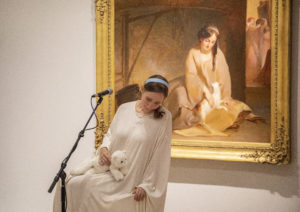
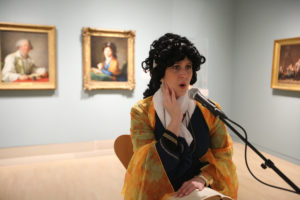
We write a script for the actors that portray these characters. The script explains their character’s motivation, answering questions like alibi, what they saw or knew about the murder and the victim (another work of art in our collection), who they thought did it, and their relationships to the other suspects. While the script helps the actors answer questions from the players, we also give them permission to improvise, as questions always come up that we could not predict.
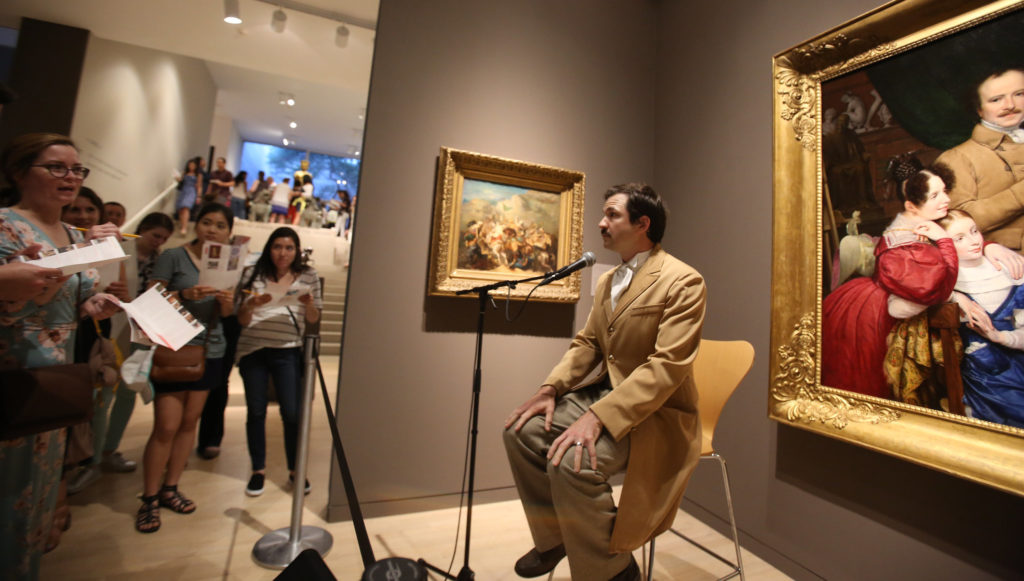
Participants get a clue sheet that outlines the premise of the game (“Eros the God of Love has been murdered . . . ”), suspect profiles, a list of rooms, and a list of weapons that are actual objects on view in our collection.
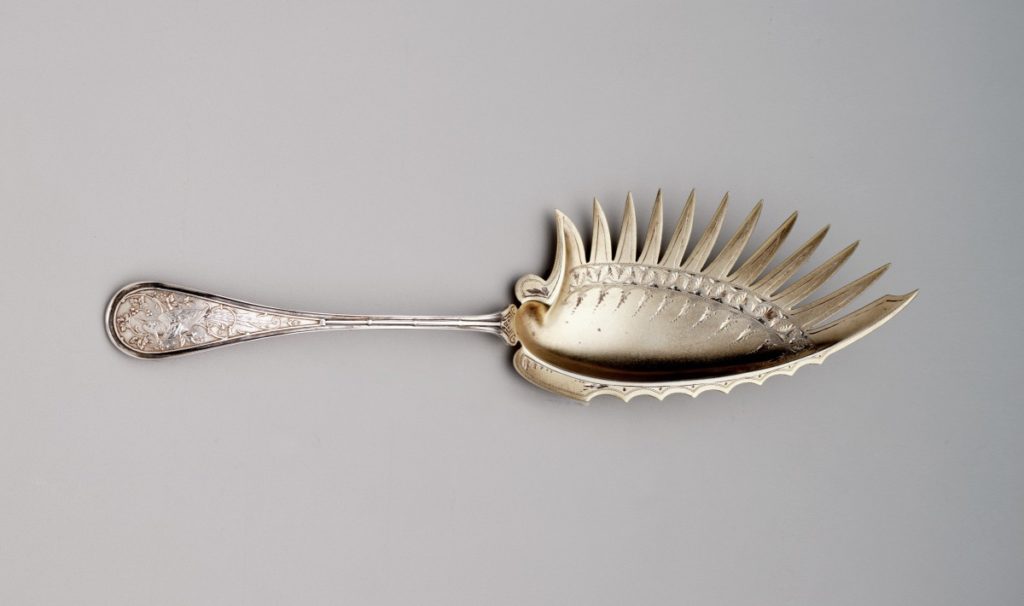
When the game starts, players have 90 minutes to question the suspects; look for the body outline, which is in one of seven galleries listed under “Rooms”; and find and look closely at the seven “Weapons” listed to see which one matches the description of the wound, which one of the suspects describes when asked.
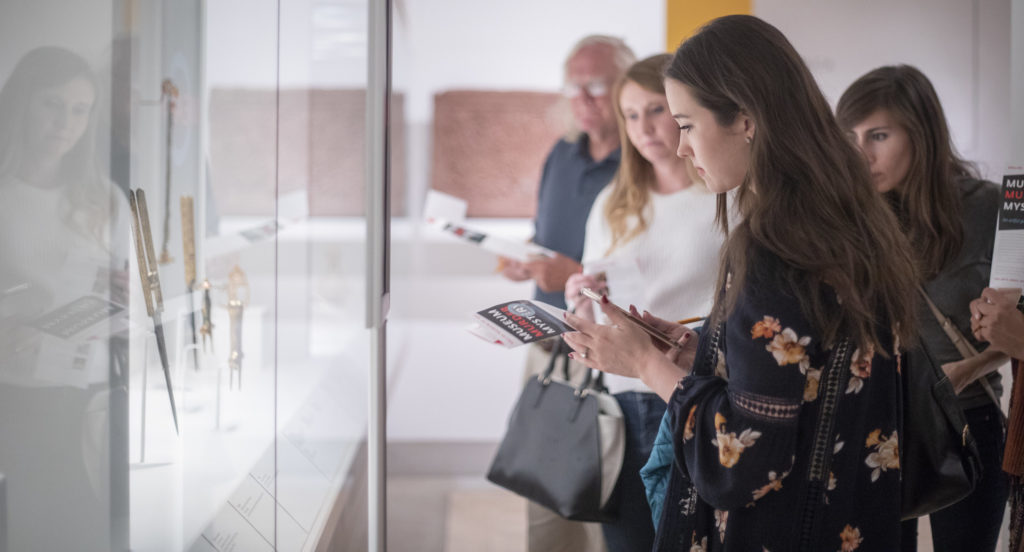
Once they think they have solved the murder, players come back to staff with their guess of the suspect, room, and weapon. If they are correct, they are entered to win one of five prize packs (including a DMA membership and a gift certificate to the DMA Store) at the end of the night. If they are wrong, we encourage them to go back and question the suspects again.
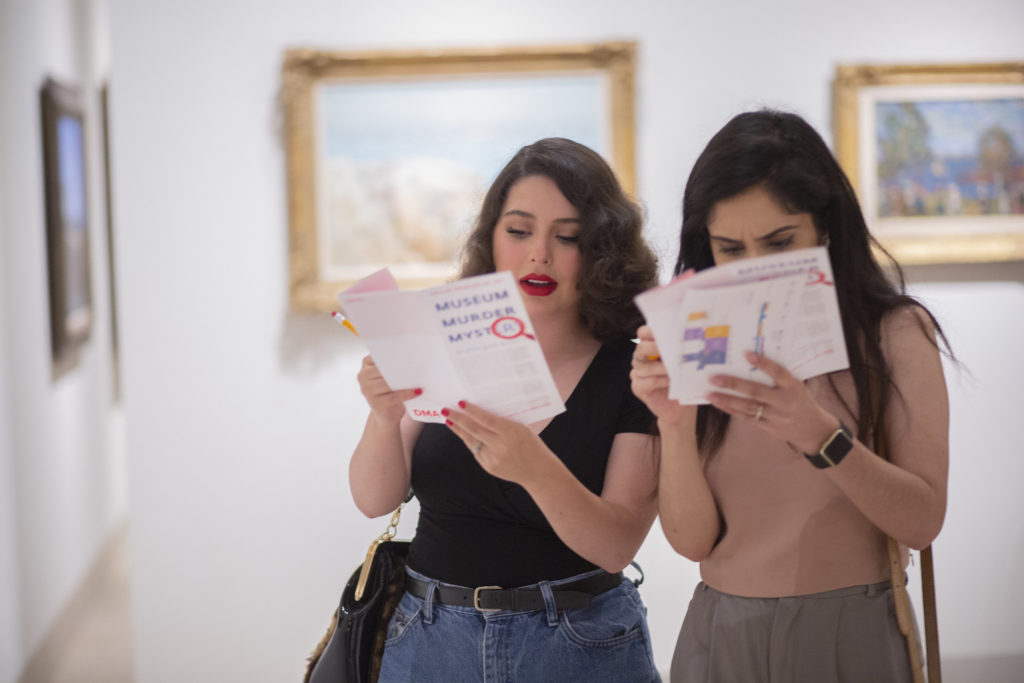
The first year, we treated the game as a race—the first one back who guesses correctly wins the prize—but we saw that people were rushing through the game trying to be the first one to guess everything correctly. It felt more stressful than fun, both for the visitors and gallery staff who were constantly cautioning them not to run through the galleries. Since one of the main goals of the program is to have visitors spend more time looking at works of art, we changed the format the following year so all participants have a chance to win a prize no matter how long it takes them to get the correct answers. With this change, we saw a distinct transformation from the frantic energy of the first year to one of friendly competition.
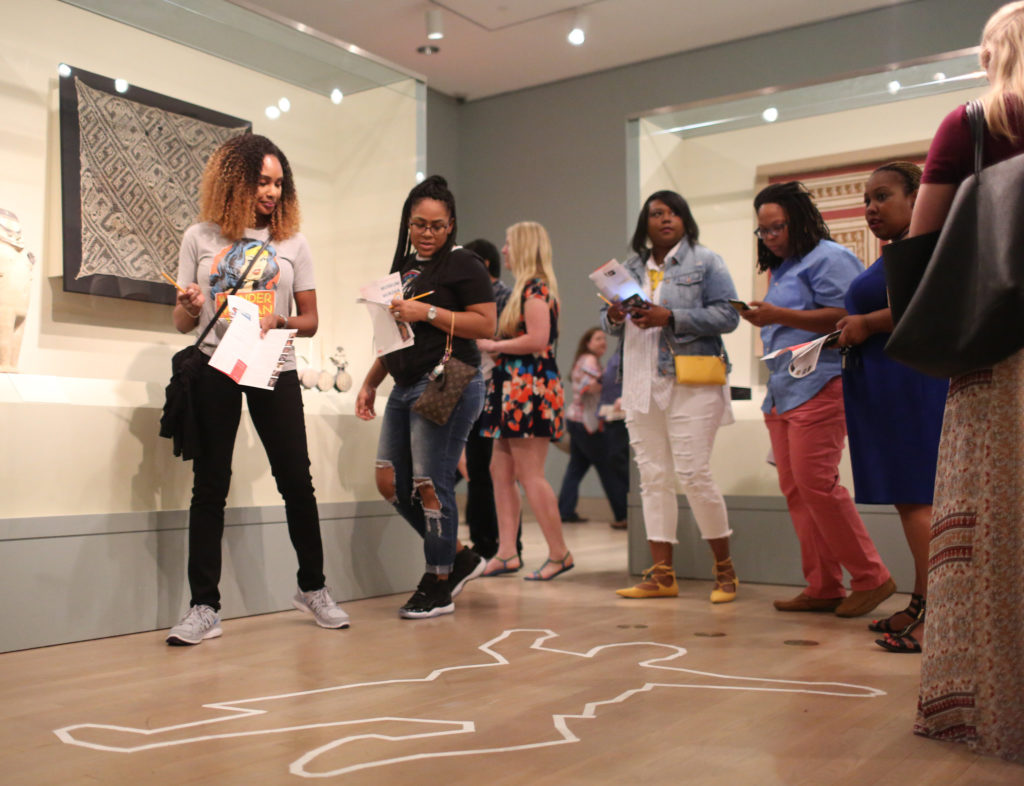
At the end of the game, we gather the players and suspects in our large Atrium and have the murderer “confess.” We create a confession document, like a newspaper article, that helps the murderer with their confession, and we have copies on hand to give to players who want to know more about the motive for the murder after they have finished playing the game.
Our Murder Mystery Game is not only a chance for visitors to have a fun experience at the DMA but also an opportunity for them to explore galleries they might not have known about and to look more closely at works of art they might have passed by otherwise. One player claimed, “it was one of the coolest events I have ever attended,” which gives us the fuel to ruthlessly murder off another work of art each year!
Stacey Lizotte is the DMA League Director of Adult Programs at the Dallas Museum of Art (DMA). She has been with the DMA for over fourteen years. In addition to the Murder Mystery Game, she oversees the nationally recognized and award-winning program Late Nights at the Dallas Museum of Art while working with the Adult Programs staff on developing and implementing the over 400 public programs offered by the DMA each year including lectures, gallery talks, concerts, and partner programs with various groups in the Dallas community.

